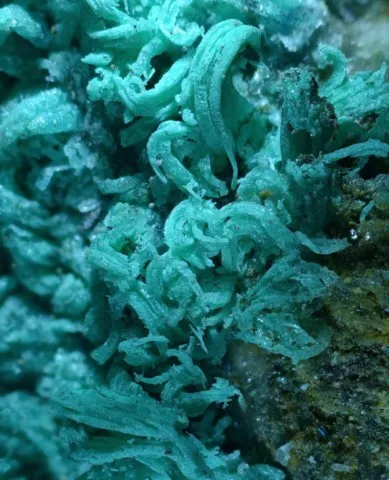GOSLARITE
Class : Sulfates, chromates, molybdates
Subclass : Hydrated sulfates
Crystal system : Orthorhombic
Chemistry : ZnSO4 7H2O
Rarity : Quite common
Goslarite is a secondary zinc sulfate that forms by oxidation of sphalerite. It is frequently a recently formed mineral, common in efflorescences and stalactites in mine shafts and galleries. It is also found in certain slags. By artificial replacement of Zn by Mg, a solid solution is obtained with epsomite. It owes its name to its discovery location : the Rammelsberg mine near Goslar (Germany). Goslarite is colorless to yellowish white, sometimes brownish or greenish. The synthetic crystals are chunky prismatic, while the efflorescences and stalactites take on a fibrous texture.
Main photo : Goslarite colored by copper from Esperanza Mine, Lavrion, Greece © Fritz Schreiber
Goslarite in the World
Twinning
No twin known for this mineral species.
Fakes and treatments
No fakes recorded for this mineral species.
Hardness : 2 to 2.5
Density : 1.97
Fracture : Fibrous
Streak : White
TP : Translucent to transparent
RI : 1.447 to 1.485
Birefringence : 0.023
Optical character : Biaxial -
Pleochroism : None
Fluorescence : None
Solubility : Water
Magnetism : NoneRadioactivity : None

